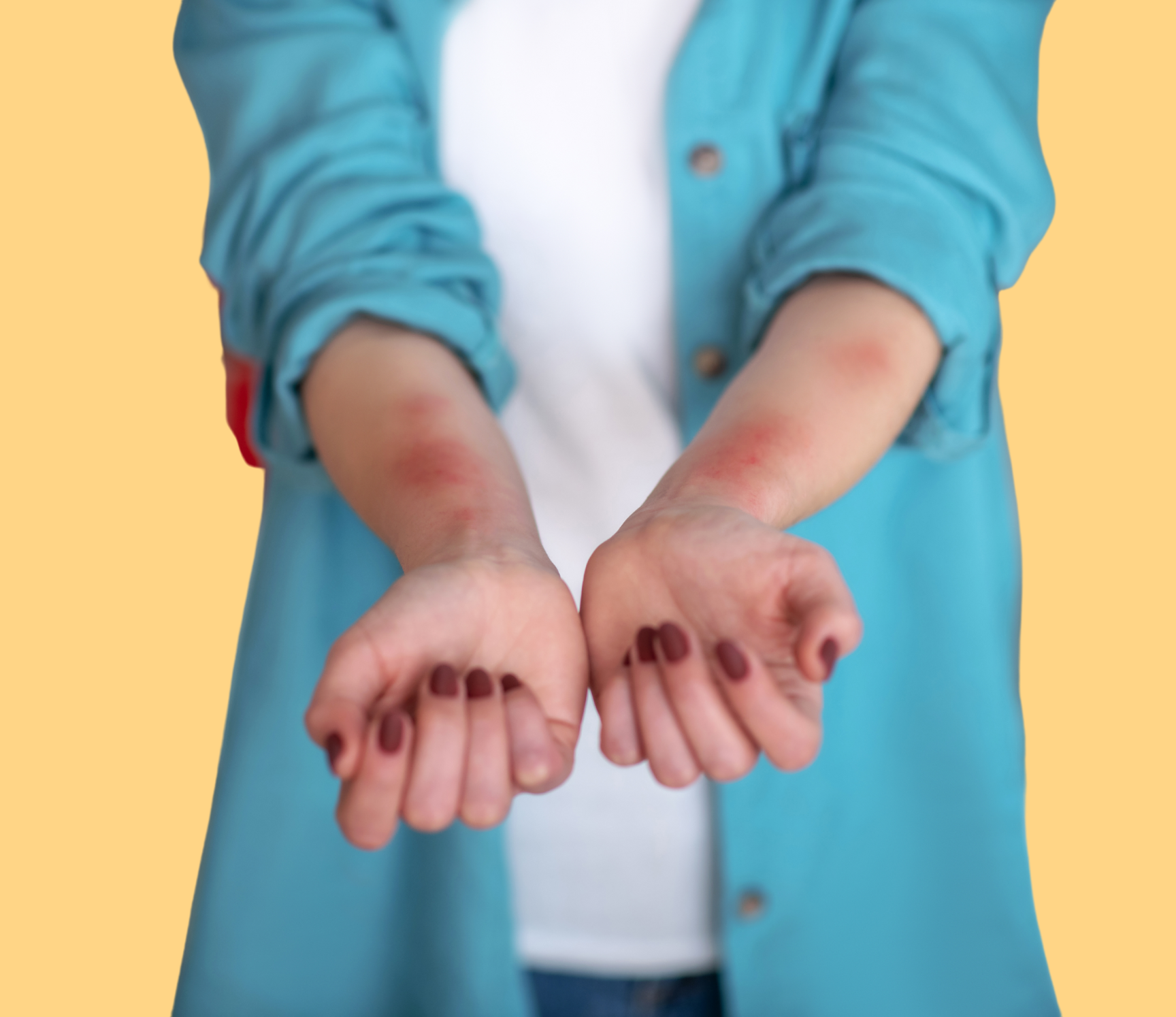SKIN TREATMENTS
Urticaria
Urticaria, also known as hives, is a skin condition characterized by
raised, red welts (wheals) on the skin that are often itchy and may be accompanied by a burning or stinging
sensation.
What is included?
- Introduction
- Causes
- Symptoms
- Care Plan

1. What is Urticaria?
Urticaria, also known as hives, is a skin condition characterized by raised,
red welts (wheals) on the skin that are often itchy and may be accompanied by a burning or stinging sensation.
2. What are the causes of Urticaria?
Urticaria can be caused by a variety of factors, including:
- Allergies: Contact with an allergen, such as pollen, animal dander, or
food, can trigger an allergic reaction and cause hives.
- Infections: Bacterial, viral, and parasitic infections can cause hives.
- Medications: Certain medications, including antibiotics, aspirin, and
ibuprofen, can cause hives.
- Physical triggers: Physical factors, such as cold, heat, pressure, and
exercise, can cause hives.
3. What are the symptoms of Urticaria?
Symptoms of urticaria can include:
- Raised, red welts on the skin
- Itching or burning sensations
- Swelling of the skin, lips, or eyes
- Warmth or redness in the affected area
4. What is the care plan for Urticaria?
Treatment for urticaria can include:
- Avoiding triggers
- Antihistamines: Over-the-counter or prescription antihistamines can help
to reduce itching and swelling.
- Corticosteroids: Oral or topical corticosteroids may be prescribed to
reduce inflammation.
- Leukotriene inhibitors: Medications such as montelukast may be used to
block the release of leukotrienes, which contribute to inflammation.
It is important to see a dermatologist if you have symptoms of urticaria, as
they can diagnose the underlying cause and provide the most appropriate treatment plan. In some cases,
additional tests, such as blood tests or skin tests, may be necessary to determine the cause of the
hives.

